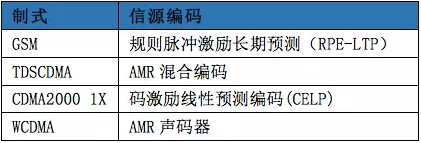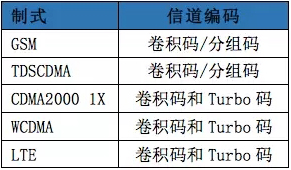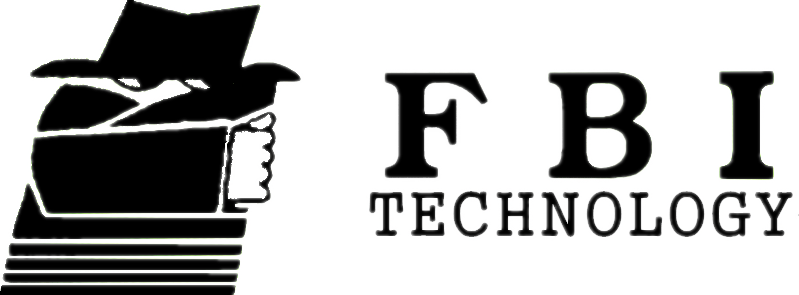News
Anti-jamming technology in mobile communication
I. Overview



Interference is the twin of mobile communication. Since the birth of mobile communication, people have been fighting with the interference. Civil mobile communication has been in existence for four generations, and the various methods of dealing with interference have their own merits. We take this opportunity to take stock of it.
Let's first look at the concept of mobile jammer tolerance: the maximum perturbation ratio (the ratio of interference to the wanted signal) that the receiver is allowed to input when the system is still working. It reflects the system's ability to withstand interference in a noisy environment.
The conditions under which the communication system can work properly are:

among them:
Pji is the interference power entering the receiver
Psi is the useful signal power received by the receiver
Mj is the interference tolerance
Therefore, from a general perspective, we can improve the anti-jamming capability of the system by reducing the input interference ratio and increasing the system interference tolerance, which is what several generations of mobile communication do.
Second, reduce the input disturbance ratio
The communication interference equation expressed by the disturbance ratio is as follows:

PTs: transmitter power
PTj: interference signal power
GTs: transmitter antenna gain
GTj: jammer antenna gain
Ls: useful signal path loss
Lj: Interference signal path loss
GRs: Antenna gain when the receiver receives a useful signal
GRj: Antenna gain when the receiver receives the interference signal
Therefore, the way to reduce the input interference ratio can be divided into three parts: reducing the interference signal, improving the useful signal, and increasing the coincidence loss of the time-frequency domain of the wanted signal and the interference.
1. Reduce the interference signal
For mobile communication, the interference is divided into intra-network interference and external interference. In addition to the interference signal source except for sweeping the frequency, the PTj, GTj, Lj, and GRj cannot be changed at will.
As for the control of interference within the network, the mobile communication systems of various standards adopt the same means, and have the following means:
➢ Reduce GTj/GRj: Use directional antennas to sectorize the cells, and align the side lobes with areas that are not intended to be covered, which is equivalent to reducing the gain in the interference/disturbed direction; TDSCDMA and TDD-LTE systems also use smart antennas ( Beam shaping), the effect is better.
➢ Reduce PTj: use power control and DTX discontinuous transmission.
Power control is one of the most important means of controlling interference in the network. For the GSM system, the power control command is sent through the SACCH, and the control period is the time of three measurement reports, about 1.5 seconds. The power control of 3G and 4G is similar. It is divided into open loop power control and closed loop power control. Simply put, open loop power control is power feedback without feedback, which is generally used in the initial access phase, while closed loop power control is based on feedback. The type of value and the feedback unit are further divided into an inner ring and an outer ring. The power control speed of different systems is different. The power control speed of WCDMA is 1500HZ, the power control speed of CDMA2000 is 800HZ, and the LTE power control speed is 200HZ.
It should be noted that due to the near-far effect, the uplink is more susceptible to interference, so the power control in mobile communication mainly refers to uplink power control.
2. Improve the useful signal
There are several ways to improve the useful signal:
1) Increase the transmission power PTs
The increase of transmit power is limited by hardware devices, and for mobile communication, each user is not only the source of their own, but also the interference source of other users. Therefore, simply improving the transmit power improves the communication effect of the user. It will increase the interference of other users in the network, which may not be beneficial overall. Therefore, in mobile communication, power control is used to adjust the power to ensure that the power of each user is just enough.
2) Diversity reception improves receiving power Psi
The so-called diversity reception refers to a method in which the receiving end performs a specific combining process on a plurality of fading characteristic signals that are received independently of each other (carrying the same information) to reduce the fluctuation of the signal level. Including receiving and merging processing two parts.
There are three commonly used receiving methods: spatial diversity, polarization diversity, and time diversity.
Space diversity: spatially relatively independent multiple receiving antennas are used to receive signals and then combined. To ensure the uncorrelation of the received signals, the distance between the antennas is required to be large enough. The purpose of this is to ensure reception. The fading characteristics of the multipath signals are different, and the distance between the receiving antennas is at least greater than 10 wavelengths. It is the most commonly used method of diversity.
Polarization diversity: Multiple receive antennas with different polarization modes are used to receive signals and then combined. Commonly used in mobile communications are positive and negative 45 degree polarized antennas.
Time Diversity: The representation of time diversity is Rake receiving technology. RAKE receiving technology is an important technology in CDMA mobile communication systems. It can distinguish fine multipath signals in time, and weight-adjust these differentiated multipath signals to make them into enhanced signals.
There are three ways to merge: maximum ratio merging, selective merging, and equal gain merging. The most common is the maximum ratio combining. The scheme only needs to linearly process the received signal at the receiving end, which is simple and easy to implement. It is composed of multiple diversity branches at the receiving end. After phase adjustment, the phase is added according to the appropriate gain coefficient. Then, it is sent to the detector for detection, and the gain generated by the combination is proportional to the number N of the diversity branches.
In addition to the legacy single-polarized antennas left in the early engineering construction, all systems of mobile communication use polarization diversity and spatial diversity, while Rake reception is only used in CDMA systems.
3. Increase Lf/Lp/Lt
The principles of these three methods are:
Lf: The interference and the useful signal are staggered from the frequency domain. Since the frequency band of the civil mobile communication cannot be determined autonomously, the use of such anti-interference mode is limited.
Lp: Isolation with interference in the polarization direction, but since the polarization of the radio waves in the mobile communication changes frequently during the propagation, it is impossible to reduce the interference by increasing the Lp.
Lt: Isolated interference from the time domain, generally used for military purposes, such as burst transmission technology, compressing data in a burst to transmit, so that the enemy can not interfere.
In addition, in a sense, the multiple access technology of each system can be regarded as such anti-interference technology, such as GSM time division multiple access, in fact, the signal of each user is isolated from time to avoid mutual interference.
Third, improve interference tolerance
The interference tolerance reflects the maximum interference level that can be “tolerated” on the premise of ensuring correct demodulation of the system. Mainly related to what technical means to adopt, of course, also related to the performance of the equipment of various manufacturers. The common technical means are as follows:

Spread spectrum technology
The spread spectrum technology essentially expands the bandwidth of the signal and then sends it to the channel for transmission. After the correlation process is performed in the receiving section, the spectrum of the useful signal is compressed, and the spectrum of noise and interference is not compressed, but spreads wider. The useful signal is extracted by a narrowband filter to filter out noise and interference.
Spread spectrum technology is widely used in 3G systems. For different service types and spread chip rates, the system can obtain different processing gains:

Processing gain = 10lg (chip rate / service bit rate)
The higher the processing gain, the lower the carrier-to-interference ratio required to ensure normal operation. For example, the chip rate of a WCDMA system is 3.84 MChips/s, and for a 12.2 K voice service, the processing gain can be as high as 25 dB, which is equivalent to not using expansion. For the same service of frequency technology, the requirement of carrier-to-interference ratio has been reduced by 25dB after using spread spectrum technology, and the anti-interference ability is greatly enhanced.
2. Frequency hopping
Frequency hopping means that both the mobile phone and the base station send and receive information according to a sequence of the same frequency point. The frequency hopping technology in mobile communication mainly refers to the application in the GSM system.
In the GSM system, the interference intensity and distribution of each frequency point in the cell are different. The change of the carrier frequency of the burst of the same call reduces the interference of the signal, and the radio interference received by the call is averaged. Otherwise, the mobile station always works at a fixed frequency point, and each burst of the entire call process may be subject to fixed strong interference, that is, the frequency hopping technique is used to spread the interference to the carrying burst. Different carrier frequencies can also be considered as frequency diversity.
The gain generated by frequency hopping is related to the number of frequency points participating in the frequency hopping, and also related to the rate of frequency hopping and the environment. In engineering, the basic method of actually testing the frequency hopping gain is: under the premise of requiring the same FER, the receiver requires different C/Is at different hopping frequency points. The difference of these C/I is obtained by frequency hopping. Gain.
3. Digital Processing Technology
1) Source coding
Source coding is the conversion of raw information into digital information for transmission. The goal is to reduce the redundancy of the source and transmit it more efficiently and economically. The most common application form is compression. Good source coding At higher bit error rates, the decoded output signal still has higher quality, and the carrier-to-interference ratio of the demodulator input signal is lower.
For voice services, source coding generally involves three steps of sampling, quantization, and coding. The source codes used by each system are:


As for the LTE system, since the data service is only supported at the beginning, the source coding is not involved. After the voice service is supported in the Volte phase, the AMR coding mode is adopted.
2) Channel coding
Channel coding is to add redundant information to the original data at the transmitting end. The redundant information is related to the original data, and then the receiving end detects and corrects errors generated by the transmission process according to the correlation.
Common channel coding methods in mobile communication include linear block codes, convolutional codes, concatenated codes, Turbo codes, and LDPC codes. Different coding complexities are different, and the functions are different. Some can only detect errors, some can correct errors. The following are the usages in various communication systems:
3) Interweaving
The interleaving technique sends consecutive bits in a message in a discontinuous manner, so that even if a string of errors occurs during transmission, the message becomes a single (or very short) when it is restored to a continuous bit string. The error bit, at which point the channel error correction random error coding technique (FEC) is used to eliminate random errors. Interleaving technology can eliminate the influence of continuous interference at a certain time, but it must be meaningful with the use of error correction technology, and with different depths of interleaving, it will bring different degrees of delay.
4. Modulation method
Different modulation methods have different anti-interference performance. In terms of phase modulation, the higher the modulation order, the higher the transmission efficiency, but the higher the signal quality requirements, the weaker the anti-interference ability, such as the anti-interference ability of 64QAM. It is weaker than 16QAM.
In addition to GSM using FM, other communication systems use phase modulation. For LTE, depending on the wireless environment, different modulation methods are used flexibly to ensure the reliability of data transmission.
The modulation methods used by each system are as follows:
Fourth, summary
With the development of communication technology, anti-interference technology is also constantly developing, but the change is not the same, the big direction is still a few, as long as you master the general context, you can get twice the result with half the effort and avoid "seeing trees." , no forest."






